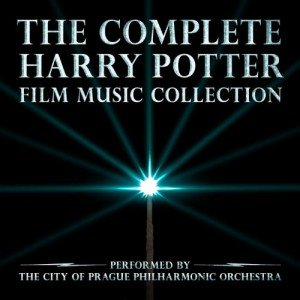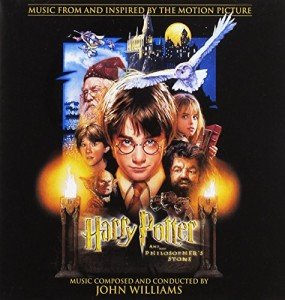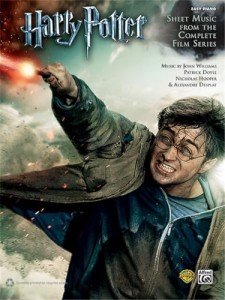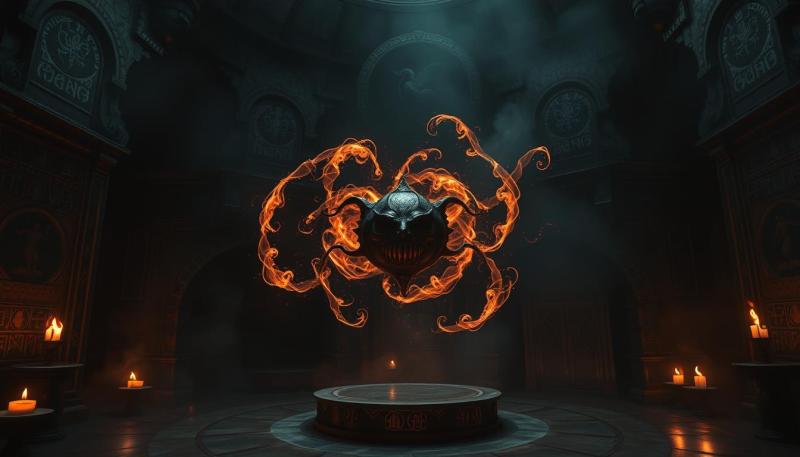Do you remember the first time you heard those soaring strings? I’ll never forget how my heart raced when "Hedwig’s Theme" swelled during the opening credits. It wasn’t just music—it was a golden ticket to a world where staircases moved and paintings whispered secrets. That’s the power of these iconic scores: they don’t just accompany the story—they become the story.
Over eight films, four brilliant composers crafted melodies that grew alongside Harry, Ron, and Hermione. John Williams gave us the musical DNA—those twinkling celesta notes we all hum. Later artists like Patrick Doyle added their magic while keeping that familiar spark alive. The scores matured as our heroes did, shifting from playful wonder to haunting complexity.
What makes this music timeless? It’s how every chord feels like coming home. Whether you’re rewatching the films or hearing suites in concert halls, these themes transport you. They’re not just movie music—they’re emotional bookmarks for a generation who grew up waiting for their Hogwarts letters.
Key Takeaways
- Four composers shaped the franchise's evolving musical identity over two decades
- John Williams' original motifs reappear throughout all eight films
- Scores mirror the story's progression from lighthearted adventure to darker themes
- Collaborative efforts maintained continuity while allowing creative growth
- Iconic melodies transcend cinema to become cultural touchstones
Overview of the Magical Music Journey
What transforms a film score into something that lives in your bones? It’s not just notes on a page—it’s how melodies become memory. Over ten years, four visionary composers crafted soundscapes that evolved with the series, creating what music historians call “the musical DNA of a generation.” Each artist brought fresh energy while honoring the magical foundation laid by John Williams.
What Makes These Soundtracks Timeless
The secret lies in emotional alchemy. These scores don’t just mirror on-screen action—they amplify themes of friendship, courage, and self-discovery. That soaring sensation when Harry first flies on Buckbeak? That’s music translating wonder into soundwaves. As the films grew darker, the orchestrations deepened too, using minor keys and complex harmonies to mirror coming-of-age struggles.
Defining Moments and Iconic Melodies
Certain themes act like Portkeys—they transport you instantly. The twinkling intro to Hedwig’s Theme remains cinema’s most recognizable motif. But listen closer: later scores weave these familiar threads into bold new patterns. Patrick Doyle’s Yule Ball waltz captures teenage awkwardness through hesitant strings, while Nicholas Hooper used haunting choir vocals when exploring grief.
What’s truly magical? These compositions work beyond the screen. Orchestras worldwide perform suites from the films, proving the music stands strong on concert hall merits. From quill scratches to dragon roars, every sound feels intentional—a reminder that great film scoring isn’t background noise. It’s storytelling in its purest form.
The Legacy of John Williams in the Wizarding World
Some musical themes feel like they’ve always existed. That’s the genius of John Williams—he didn’t just write melodies for The Philosopher’s Stone, he built a sonic castle that still stands decades later. His work became the musical DNA of the Wizarding World, influencing every composer who followed.

Hedwig's Theme and Its Enduring Magic
Picture this: Williams composed those twinkling celesta notes as trailer music. When Warner Bros. executives heard it, they demanded he expand it into the full score. What began as promotional material became the series’ heartbeat—a melody representing magic itself, not just Harry’s snowy owl.
Contributions to the First Three Films
Across The Philosopher’s Stone, Chamber of Secrets, and Prisoner of Azkaban, Williams planted musical seeds that still bloom today. He crafted:
- Character motifs that evolved with the story
- Distinctive instrumentation (like the bassoon for Hagrid)
- Action themes that made Quidditch feel Olympic-level epic
His final score for Prisoner of Azkaban introduced darker tones through complex harmonies, mirroring the series’ shift toward maturity. Yet even as later composers added their voices, Williams’ themes remained the golden thread tying the magic together.
Spotlight on Patrick Doyle: Crafting the Goblet of Fire Score
Imagine stepping into a composer's shoes after John Williams defined a franchise's sound. That was Patrick Doyle's reality when he took over for Goblet of Fire. The Scottish maestro faced a double challenge: honor Williams' iconic themes while crafting fresh magic. His solution? A score that blends familiar motifs with bold new directions.
Innovative Themes for the Yule Ball and Quidditch
Doyle's genius shines brightest in two key sequences. The Yule Ball scene needed teenage magic – not just wands and spells, but first crushes and clumsy dances. His "Potter Waltz" delivers with hesitant strings that mirror awkward glances, then swells into romantic confidence.
For the Quidditch World Cup, Doyle composed adrenaline-pumping brass fanfares. You can almost feel the crowd roaring as French horns duel with Celtic percussion. It’s Quidditch meets the Olympics – complete with a magical national anthem.
Bridging Classic and Modern Musical Elements
Doyle masterfully balanced legacy and innovation. His "Hogwarts Hymn" retains Williams' wonder but adds regal gravity. Contrast this with the ten-minute "Voldemort" suite – all dissonant strings and chilling choir vocals that signaled the series' darker turn.
What makes this score special? It’s a bridge between eras. Doyle preserved Hedwig’s Theme like a cherished heirloom while stitching new patterns into the Wizarding World’s musical tapestry. From Yule Ball jitters to Dark Lord dread, his music made growing up feel epic.
Nicholas Hooper's Contribution to Film Magic
How do you follow John Williams' act? For British composer Nicholas Hooper, the answer lay in emotional precision. When director David Yates took over Order of the Phoenix, he brought Hooper—a collaborator known for weaving intimacy into grand narratives. Their partnership created scores that felt like secret conversations between friends.

Capturing the Essence of Order of the Phoenix
Hooper's genius shines in his Order of the Phoenix analysis. He twisted Williams' iconic motifs into darker shapes, mirroring Harry's simmering anger. Listen to Professor Umbridge's theme—its music-box sweetness hides razor-sharp strings. It’s musical sarcasm, perfect for a bureaucrat wielding pink quills.
The Evolving Score in Half-Blood Prince
By Half-Blood Prince, Hooper blended nostalgia with foreboding. He reintroduced Williams' Quidditch theme during aerial sequences, but draped it in misty harmonies. His guitar background surfaces in quiet moments—Slughorn's memories shimmer with delicate plucked strings, making regret sound beautiful.
| Film | Innovation | Legacy Element |
|---|---|---|
| Order of the Phoenix | Rebellious brass sections | Darkened Hedwig's Theme |
| Half-Blood Prince | Guitar-infused intimacy | Revived Quidditch motif |
Hooper’s Grammy-nominated work bridges two eras. His scores whisper secrets about growing up—the thrill of defiance, the ache of loss. While later composers would escalate the war themes, Hooper made teenage turmoil feel epic. That’s magic no spell could replicate.
Alexandre Desplat: The Sound of the Final Chapters
Ending a saga is like conducting a symphony - every note must honor what came before while building to a breathtaking finale. When Alexandre Desplat received his golden owl to score the Deathly Hallows films, he faced sky-high expectations. Fans dreamed of John Williams' return, but scheduling conflicts kept him away. Enter the French composer, whose delicate balance of newness and nostalgia gave us closure worthy of a phoenix song.
Evoking Emotion in Deathly Hallows Parts One and Two
Desplat approached Part 1 like a musical survival guide. His "Lily's Theme" - a haunting music box melody - becomes the emotional spine connecting both films. "It ghosts the story," he told The Hollywood Reporter. You hear it whisper through forest hideouts and scream during wand battles.
For Part 2, he blended previous composers' DNA into his work. Listen closely to "Statues" - Williams' Hedwig motif emerges like a patronus through Desplat's urgent strings. Even Nicholas Hooper's darker tones resurface when exploring Snape's memories.
| Film | Emotional Focus | Musical Technique | Legacy Element |
|---|---|---|---|
| Deathly Hallows: Part 1 | Isolation & uncertainty | Sparse piano motifs | Lily's Theme introduction |
| Deathly Hallows: Part 2 | Sacrifice & resolution | Full orchestra crescendos | Williams' themes reimagined |
The Role of Music in Film Closure
Desplat's genius lies in making farewells feel complete. His "Farewell to Dobby" uses Celtic harp plucks that mimic falling tears, then builds into a heroic sendoff. For the final battle, he composed three distinct layers - brass for action, strings for emotion, choir vocals for mythic weight.
The closing "Leaving Hogwarts" reprise isn't just callback music. It's a thank-you note to fans, weaving 19 years of memories into two minutes. Through Desplat's baton, eight films became one unforgettable symphony.
harry potter soundtracks: A Listicle of Must-Listen Scores
Ever found yourself humming a melody that instantly transports you to a world of magic? Let’s explore the musical spells that became as iconic as the characters themselves. This curated journey reveals why these compositions still give us chills decades later.
Top Moments and Fan-Favorite Themes
John Williams’ "Hedwig’s Theme" isn’t just an opening credits staple—it’s the series’ sonic Sorting Hat. But dig deeper into the scores. "Harry’s Wondrous World" makes your heart swell like you’re soaring on a Firebolt, while "Buckbeak’s Flight" blends adventure with bittersweet beauty through soaring strings.
Don’t overlook the quiet gems. "Leaving Hogwarts" captures that end-of-term melancholy perfectly. And "Lily’s Theme" from Deathly Hallows? A music box lullaby that punches harder than a Bludger.
Harry Potter Complete Film Soundtrack Collection
Experience the magical music that brought the Wizarding World to life on screen
Product information
$34.99
Product Review Score
4.25 out of 5 stars
145 reviewsProduct links
Comparative Insights Across Films
Notice how composers reinvented core ideas. Williams’ triumphant "Fawkes the Phoenix" uses flute trills for rebirth symbolism. Later, Patrick Doyle’s "Potter Waltz" turns ballroom jitters into musical confetti. Each score reflects its film’s era—from Chamber of Secrets’ playful mystery to Half-Blood Prince’s shadowy harmonies.
These themes work because they grew with us. The music matures from Philosopher’s Stone’s wide-eyed wonder to Deathly Hallows’ complex emotional tapestry. That’s why pressing play feels like reuniting with old friends—even if your Hogwarts letter got lost in the mail.
FAQ
What’s the most iconic theme from the Harry Potter soundtracks?
John Williams’ “Hedwig’s Theme” is instantly recognizable and serves as the musical backbone of the franchise. Its magical melody appears across all eight films, evolving with the story’s darker tones while maintaining its whimsical roots.
How did Patrick Doyle’s score for Goblet of Fire differ from earlier films?
Doyle introduced bold, modern textures for events like the Yule Ball and Quidditch World Cup, blending orchestral grandeur with contemporary rhythms. His work bridged the gap between Williams’ classic style and the saga’s maturing narrative.
Why does the music in Deathly Hallows feel emotionally intense?
Alexandre Desplat used haunting motifs and minimalist arrangements to mirror the characters’ struggles. Tracks like “Lily’s Theme” emphasize loss and resilience, giving the finale a deeply personal, bittersweet quality.
Which composer captured the darker shift in Half-Blood Prince?
Nicholas Hooper’s score wove suspenseful strings and melancholic melodies to reflect the film’s themes of memory and destiny. His work in “Dumbledore’s Farewell” remains a standout for its emotional depth.
Are there recurring musical motifs beyond Hedwig’s Theme?
Yes! Themes like the “Hogwarts March” and “Diagon Alley” reappear across films, often reorchestrated to match each story’s tone. Even minor characters, like Dobby the house-elf, get musical nods that deepen their arcs.







